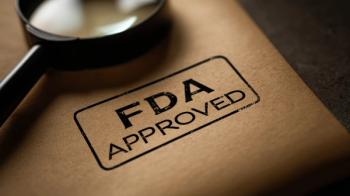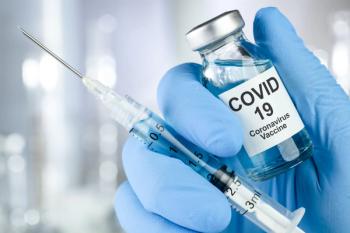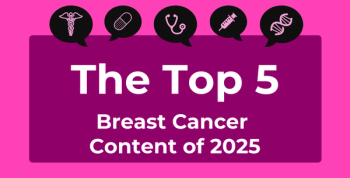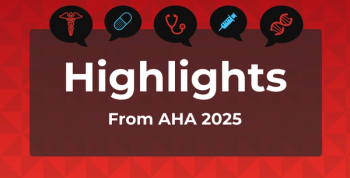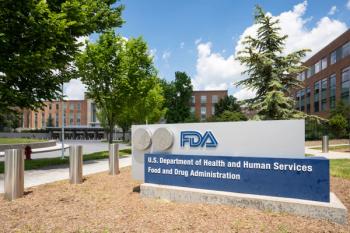
Higher Levels of PrEP Use Associated With Reduction in HIV Diagnoses
Key Takeaways
- Increased PrEP usage is linked to decreased HIV diagnosis rates, with a notable decline from 13.0 to 10.6 per 100,000 over a decade.
- State-level PrEP coverage significantly impacts HIV diagnosis rates, with a 5% increase in PrEP coverage leading to a 3.4% reduction in diagnoses.
Making pre-exposure prophylaxis (PrEP) more accessible can help to decrease the incidence of HIV in the US.
Higher levels of use for pre-exposure prophylaxis (PrEP) were associated with lower rates of diagnoses of
PrEP in its various forms is able to reduce the risk of contracting HIV in those who are vulnerable to contracting it, either from sexual exposure or through drug use.2 How PrEP affects the population is not as well studied, especially as it pertains to adherence, usage, and the risk of HIV acquisition in those who use PrEP. With some populations of the US more likely than others to contract HIV,3 this impact is important to measure to understand where coverage of PrEP is needed. This study aimed to provide an assessment of the relationship between HIV diagnoses and PrEP coverage at the state level using population-based data.
The analysis took place between January 1, 2012, and December 31, 2022, in the US. A nationwide commercial pharmacy database was used to calculate the number of prescriptions for PrEP. Treatments for postexposure prophylaxis or for chronic hepatitis B were excluded from the analysis. People who had been prescribed PrEP at least once in a year were included.
All newly diagnosed HIV cases reported in the National HIV Surveillance System were defined as HIV diagnoses, with the date of diagnosis being the date of a first confirmed positive test. PrEP coverage was calculated as PrEP users per 100 people who could use PrEP in each state in a calendar year. The PrEP users were divided into men who have sex with men (MSM), heterosexuals, and people who inject drugs. Viral suppression data were collected from the National HIV Surveillance System. Data from 48 states and the District of Columbia had met the requirements of the CDC for reporting and had viral load data.
The mean diagnosis rates of HIV declined from 13.0 to 10.6 per 100,000 between January 1, 2012, and December 31, 2022. Mean PrEP coverage increased from 0.6% to 26.3% in the same time period. The estimated annual percentage change (EAPC) varied in HIV diagnosis rates across the country, spanning from a 6.8% decrease in Maryland to a 9.1% increase in West Virginia. The mean PrEP coverage was 10.9% in states with a decrease in EAPC of diagnosis rates of HIV and the mean PrEP coverage was 5.1% in states with significant increases in EAPC. States with no significant change had a mean PrEP coverage of 9.2%.
Mean PrEP coverage was used to divide the states into quintiles based on PrEP coverage. White individuals had a significant association between HIV diagnoses and PrEP coverage after adjusting for viral suppression. The overall EAPC in diagnosis rates decreased by 2.3% across all 50 states but excluding the District of Columbia. HIV diagnosis rate had an estimated decade percentage change of –20.7%. State-level PrEP coverage was the main factor associated with this decrease, with each 5% increase in PrEP corresponding with a 3.4% reduction in diagnoses after adjusting for state-specific viral suppression.
There were some limitations to this study. Misclassification of PrEP use was possible. The underestimation of HIV diagnoses was also possible due to the possibility of an individual going years without a diagnosis. Misclassification of time between infection and diagnosis might be different due to the frequency of tests that those receiving PrEP take vs those not taking PrEP. Other protective behaviors beside PrEP are possible in those who receive PrEP. Time and states all had different definitions of viral load and differences in reporting. The increase in PrEP usage could have been due to the increased efforts from the Ending the HIV Epidemic initiative and the National HIV/AIDS Strategy. Individuals were considered unsuppressed if they had no viral load data for the year. Data on PrEP coverage were not race-specific. This study was conducted in the US and may not be generalizable to other countries.
The researchers concluded that there was a decrease in new diagnoses of HIV corresponding with an increase in PrEP coverage. People who need PrEP still have low PrEP coverage and diagnoses of HIV are still higher than needed to fulfill the goal of ending the HIV epidemic.
“We should prioritize efforts to continue the current increasing trajectories of PrEP coverage, and we expect that further increases in PrEP coverage will correspond to a greater extent of averted infections and declines in subsequent new HIV diagnoses,” the authors concluded.
References
1. Sullivan PS, Juhasz M, DuBose SN, et al. Association of state-level PrEP coverage and new HIV diagnoses in the USA from 2012 to 2022: an ecological analysis of the population impact of PrEP. Lancet HIV. 2025;12:e440-448. doi:10.1016/S2352-3018(25)00036-0
2. Pre-exposure prophylaxis. HIV.gov. February 7, 2025. Accessed June 30, 2025.
3. Who is at risk for HIV? HIV.gov. February 7, 2025. Accessed June 30, 2025.
Newsletter
Stay ahead of policy, cost, and value—subscribe to AJMC for expert insights at the intersection of clinical care and health economics.

